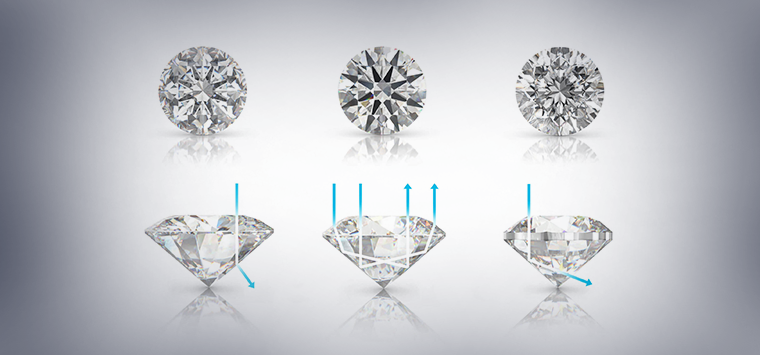Table of Contents
Mysteries of Lab Diamonds
In the realm of diamonds, brilliance reigns supreme. Every facet, every angle, every cut contributes to the mesmerizing sparkle that captures hearts and imaginations alike. But what exactly goes into determining the brilliance of a diamond? Join us as we delve into the intricate world of lab diamonds cut grading, unlocking its secrets one facet at a time.
The Essence of Cut: Beyond the Sparkle
The cut of a diamond is more than just its surface appearance; it’s a reflection of craftsmanship and precision. A well-cut diamond maximizes light reflection and refraction, resulting in unparalleled brilliance and fire. But how does one evaluate the cut of a lab-grown diamond?
Understanding the 4Cs: Cut, Clarity, Color, and Carat Weight
When it comes to evaluating diamonds, the 4Cs—cut, clarity, color, and carat weight—serve as the fundamental criteria. While each C plays a crucial role, the cut stands out as the primary factor influencing a diamond’s brilliance. But within the realm of lab diamonds, cut grading takes on a unique significance.
Diving Deeper into Cut Grading
Lab-grown diamonds undergo a meticulous process to achieve their dazzling beauty. Cut grading assesses the symmetry, proportions, and polish of a diamond, determining its overall quality and brilliance. But what specific parameters are considered in this evaluation?
Symmetry: The alignment and balance of a diamond’s facets contribute to its symmetry. A well-proportioned diamond reflects light evenly, enhancing its brilliance.
Proportions: The angles and dimensions of a diamond’s facets impact its light performance. Optimal proportions ensure maximum light reflection and dispersion.
Polish: The smoothness and luster of a diamond’s surface affect its overall appearance. A high-quality polish enhances the diamond’s clarity and brilliance.
The Emergence of Lab Diamonds: Ethical and Eco-Friendly Alternatives
In recent years, lab-grown diamonds have emerged as a sustainable and ethical alternative to mined diamonds. These diamonds are cultivated in controlled environments using advanced technology, eliminating the need for environmentally destructive mining practices. But how do lab-grown diamonds fare in terms of cut quality?
Bridging Tradition with Innovation: The Art of Diamond Cutting
While the process of cutting diamonds remains steeped in tradition, advancements in technology have revolutionized the industry. Precision tools and innovative techniques allow for unparalleled control over the cutting process, resulting in lab-grown diamonds of exceptional quality. But how does this translate to cut grading?
The Role of Expertise and Technology
In the realm of lab diamonds, cut grading combines traditional expertise with cutting-edge technology. Gemologists meticulously analyze each diamond, leveraging specialized equipment to assess its cut quality. This fusion of artistry and innovation ensures that lab-grown diamonds meet the highest standards of brilliance and beauty.
Demystifying Cut Grades: From Excellent to Poor
Just as with natural diamonds, lab created diamonds are assigned cut grades ranging from Excellent to Poor. These grades serve as a benchmark for evaluating a diamond’s brilliance and light performance. But what distinguishes diamonds across the cut grade spectrum?
The Anatomy of Cut Grades
Excellent: Diamonds with excellent cut grades exhibit exceptional brilliance and fire. Their precise proportions and symmetry maximize light performance, creating a captivating sparkle.
Very Good: Diamonds with very good cut grades possess impressive brilliance and fire, though slight deviations in proportions may be present. They offer excellent value without compromising on quality.
Good: Diamonds with good cut grades display respectable brilliance and fire, though minor flaws in symmetry or proportions may impact their overall appearance. They offer a balance between quality and affordability.
Fair: Diamonds with fair cut grades exhibit noticeable deviations from ideal proportions, resulting in diminished light performance. While still acceptable, they may lack the exceptional brilliance of higher-grade diamonds.
Poor: Diamonds with poor cut grades display significant flaws in symmetry and proportions, leading to dullness and lackluster appearance. They may represent a more budget-friendly option but sacrifice brilliance for affordability.
Navigating the Maze: Choosing the Right Cut Grade
Selecting the perfect cut grade involves a careful balance of personal preference and budget considerations. While diamonds with excellent cut grades.

